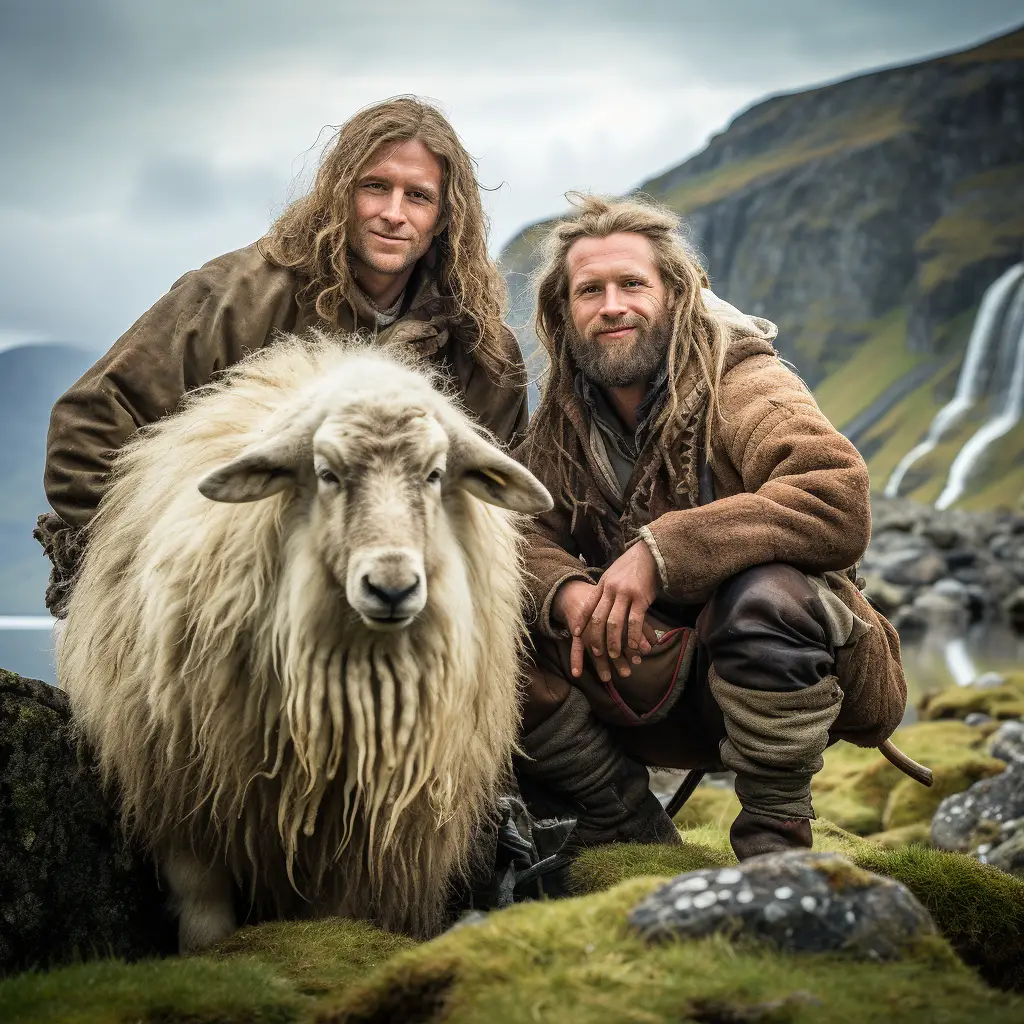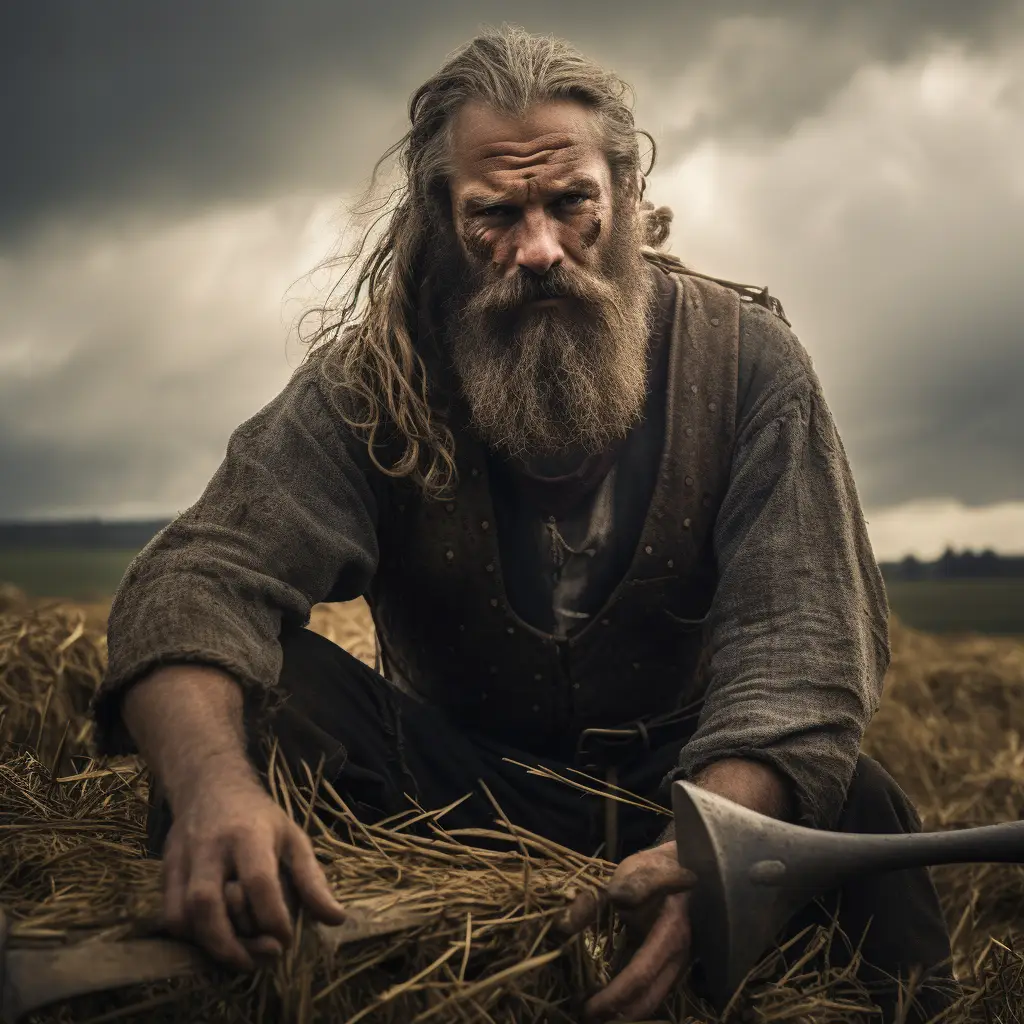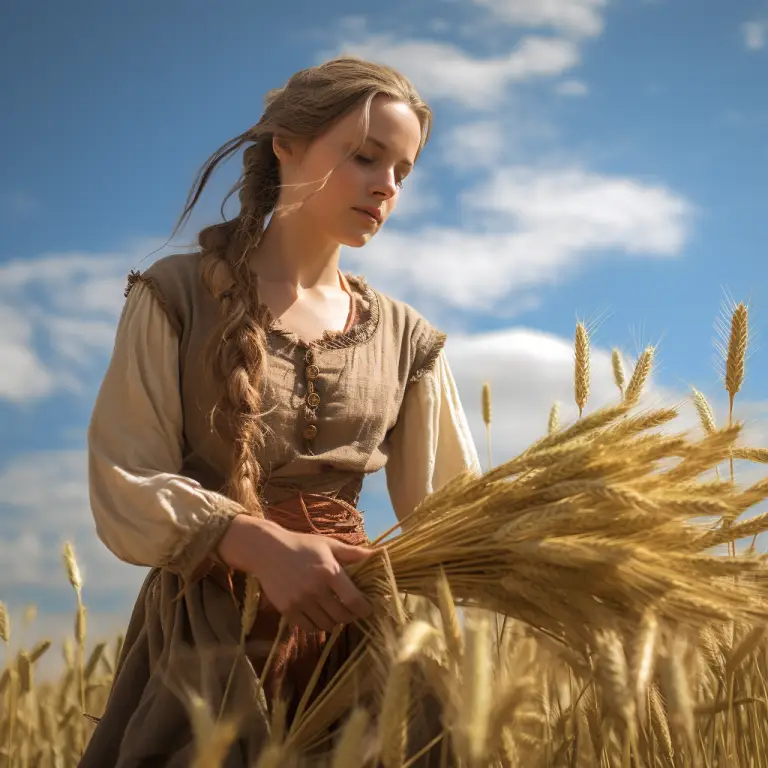Vikings were skilled farmers who lived in Scandinavia during the Viking Age, roughly from the late 8th century to the early 11th century. They primarily relied on agriculture for sustenance.
The harsh climate in Scandinavia made farming hard work, but it was essential for their survival.
Crops: Vikings cultivated a variety of crops, including barley, oats, rye, and wheat. These grains were used to make bread and porridge, forming a significant part of their diet.
Grains: Vikings grew several types of grains, including barley, oats, rye, and wheat. These grains were staple crops and formed the basis for making bread and porridge, which were dietary staples for the Vikings.
Barley: Barley was particularly important in Viking farming. It could thrive in colder and harsher conditions, making it well-suited to the Scandinavian climate. Barley was used to make bread and beer, providing both food and drink for the Viking households.
Storage: Vikings developed storage methods to preserve their crops. They used underground pits or structures to store grains, protecting them from the elements and pests. This ensured a more stable food supply throughout the year.
Tools: Viking farmers used basic tools like wooden ploughs, scythes, and sickles for planting and harvesting crops. The ploughs were typically pulled by animals, such as oxen or horses.
Wooden Plough: The Viking plough was typically made of wood and had an iron-tipped blade. It was pulled by animals such as oxen or horses. The plough helped break up the soil for planting crops.
Sickle: Used for harvesting crops, the sickle was a curved, sharp-edged tool. Vikings would use the sickle to cut grain during the harvest season.
Scythe: Similar to the sickle, the scythe had a long, curved blade. It was used for cutting grass and harvesting crops on a larger scale. The curved design allowed for efficient cutting in a sweeping motion.
Hoe: Vikings used hoes to break up soil, remove weeds, and create furrows for planting seeds. The hoe was a versatile tool in the early stages of farming.
Rake: Rakes were employed for gathering and levelling soil. They helped in preparing the ground for planting and in managing the distribution of seeds.
Seed Drill: While the exact design of the seed drill is unclear, Vikings likely used a simple version to sow seeds efficiently. This tool allowed for more organized and uniform planting.
Spade: Spades were used for digging and turning soil. They were essential for various tasks, such as creating planting beds and preparing the ground for different crops.
Wooden Trowel: Viking farmers used wooden trowels for tasks like transplanting seedlings and managing the soil around individual plants.
Axes: While primarily associated with woodworking and clearing land, axes were versatile tools for Vikings. They could be used for tasks such as chopping roots, clearing debris, and shaping wooden implements.
Baskets and Bags: These were crucial for collecting and transporting harvested crops. Baskets were often woven from plant materials, providing a lightweight and sturdy option for carrying produce.
The tools used by Viking farmers were generally made from locally available materials, such as wood and iron. Their design reflected the need for durability and practicality in the challenging agricultural conditions of Scandinavia.
Livestock: In addition to crops, livestock played a crucial role in Viking farming. They raised cattle, sheep, goats, and pigs. These animals provided meat, dairy products, and hides.
Cattle: Cattle were one of the most important livestock animals for the Vikings. They provided meat, milk, and hides. The hides were used for clothing, shelter, and other practical purposes. Cattle were also a symbol of wealth and status.
Sheep: Sheep were raised for their wool, which Vikings used to make clothing and textiles. The meat from sheep was another valuable resource, and their milk could be consumed or used to make cheese.
Goats: Goats were hardy animals that could thrive in the challenging Scandinavian environment. They were kept for their milk, meat, and hides. Goats were also useful for clearing vegetation in areas where it was difficult to cultivate crops.
Pigs: Pigs were raised by Vikings for meat. They were allowed to forage in forests and open areas, contributing to the pigs’ diet. Pigs were a common source of protein for the Viking diet.
Horses: Horses were highly valued by the Vikings for transportation, agriculture, and even in warfare. They were essential for ploughing fields and pulling carts. Wealthier Vikings, including warriors and chieftains, often owned horses.
Chickens: Chickens were kept for their eggs and meat. While not as prominent as larger livestock, chickens provided a steady supply of eggs and were a valuable source of protein.
The Viking economy was closely tied to their agricultural practices and livestock. Animals were not only a source of sustenance but also represented wealth, status, and societal roles. The Vikings practiced a mixed farming system, combining the cultivation of crops with the husbandry of various livestock to ensure a diverse and sustainable food supply.
Crop Rotation: To maintain soil fertility, Vikings practiced crop rotation. They divided their fields into sections and rotated crops between them, allowing the land to recover nutrients naturally. This sustainable farming method helped prevent soil exhaustion.
Irrigation: Vikings were known to create ditches and drains to manage water levels in their fields. This was crucial for preventing waterlogging and ensuring proper drainage.
Seasonal Cycle: Like many agrarian societies, Viking farming activities followed the seasonal cycle. Spring and summer were dedicated to planting and tending crops, while fall was the time for harvesting. Winter was a period of relative inactivity on the farm.
Fertility Rituals: The agricultural cycle played a significant role in Viking religious and cultural practices. Fertility rituals and celebrations were often tied to planting and harvest seasons, reflecting the importance of agriculture in their lives.
Adaptation to Climate: Vikings adapted their crop choices to the challenging northern climate. The short growing season and colder temperatures influenced the selection of crops that could thrive in these conditions.
Sustainability: Vikings had a deep connection with nature and relied on sustainable farming practices. They understood the importance of preserving the land for future generations.
Viking farmers were resourceful and adapted to their challenging environment, showcasing a balance between agricultural practices and their close relationship with the natural world.



